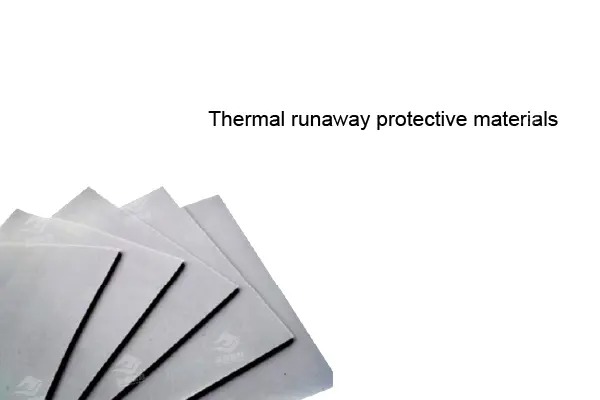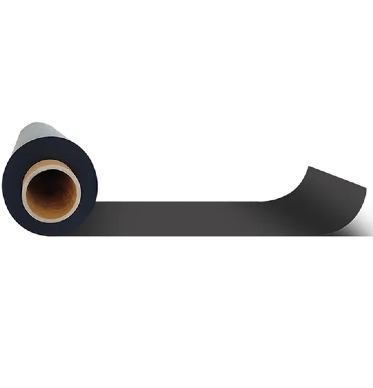Exploring Its Critical Role in New Energy Applications
In the rapidly evolving landscape of new energy technologies, advanced materials play a pivotal role in ensuring safety, efficiency, and longevity. Among these materials, Ceramic Silicone Foam has emerged as a critical solution, particularly for thermal management and fire protection in energy storage systems such as lithium-ion batteries. This article delves into what Ceramic Silicone Foam is, its unique properties, and its extensive use in new energy fields, highlighting how it supports innovation while addressing safety concerns.
Understanding Ceramic Silicone Foam: Composition and Properties
Ceramic Silicone Foam is a highly specialized material combining the flexible, elastic properties of silicone with the heat resistance and insulation characteristics of ceramics. The fusion of these two components creates a foam that is lightweight, thermally stable, and chemically inert, making it an excellent candidate for demanding industrial applications.
Unlike traditional foams, Ceramic Silicone Foam exhibits a unique microstructure characterized by ceramic particles embedded within a silicone matrix. This design grants it several advantages: exceptional thermal insulation, outstanding resistance to thermal runaway (a dangerous overheating phenomenon), and impressive mechanical resilience under stress.
Some key properties of Ceramic Silicone Foam include:
Thermal insulation: Low thermal conductivity reduces heat transfer, essential in protecting sensitive components.
Chemical and weather resistance: Resistant to oxidation, moisture, and harsh chemicals, making it durable in diverse environments.
Lightweight and flexible: Unlike rigid ceramic materials, this foam maintains flexibility, enabling easy installation and vibration absorption.
These characteristics are particularly valuable in the context of new energy solutions, where both safety and performance are paramount.

Ceramic Silicone Foam in New Energy: Applications and Benefits
The new energy sector, especially areas focused on renewable power and energy storage, demands materials that can manage heat and ensure safety under extreme operating conditions. Ceramic Silicone Foam has become integral in several new energy applications, including lithium-ion battery packs, fuel cells, solar power systems, and electric vehicles.
Thermal Runaway Protection in Energy Storage Systems
One of the most significant uses of Ceramic Silicone Foam is in thermal runaway protection within battery modules. Thermal runaway is a chain reaction of overheating that can lead to catastrophic failure, including fires or explosions. This risk is particularly acute in high-density lithium-ion batteries used in electric vehicles and grid storage.
Ceramic Silicone Foam acts as a thermal barrier and mechanical cushion, isolating battery cells to prevent heat propagation. By absorbing and dissipating heat rapidly while maintaining structural integrity, the foam limits temperature spikes and inhibits the spread of fire. This capability is crucial for meeting stringent safety standards and extending the operational life of energy storage systems.
Insulation and Vibration Dampening in Electric Vehicles
In electric vehicles (EVs), weight reduction and component longevity are essential. Ceramic Silicone Foam contributes by providing lightweight thermal insulation while cushioning components against vibrations and shocks during vehicle operation. Its flexibility and resilience prevent damage to sensitive electronics and battery cells, improving vehicle reliability and passenger safety.
Enhancing Efficiency in Renewable Energy Systems
Beyond batteries, Ceramic Silicone Foam is also used in solar and fuel cell technologies to insulate components exposed to fluctuating environmental temperatures. By maintaining optimal operating temperatures, the foam helps improve system efficiency and reduces thermal losses, contributing to overall energy yield and reliability.
Technical Overview: Key Parameters of Ceramic Silicone Foam
To better understand the suitability of Ceramic Silicone Foam for various applications, it is helpful to consider its technical specifications. The following table outlines common parameters relevant to new energy uses:
| Parameter | Typical Value | Description |
| Density | 0.3 – 0.5 g/cm³ | Lightweight nature ensures minimal impact on weight |
| Operating Temperature | -60°C to 1000°C | Broad thermal range suitable for extreme environments |
| Thermal Conductivity | 0.03 – 0.06 W/m·K | Low heat transfer rate supports insulation |
| Compression Set | <15% after 22 hours at 200°C | Maintains shape and cushioning under thermal stress |
| Chemical Resistance | Excellent | Resists oxidation, moisture, and many chemicals |
| Electrical Insulation | High | Acts as an insulator preventing electrical faults |
These parameters reflect the versatility of Ceramic Silicone Foam, enabling its adoption across a range of new energy technologies. Customization options allow manufacturers to tailor the foam’s density, thickness, and other attributes to match specific performance requirements.
Advantages of Ceramic Silicone Foam Over Conventional Materials
Traditional thermal insulation and protective materials often fail to meet the evolving demands of new energy systems due to their weight, fragility, or poor thermal performance. Ceramic Silicone Foam overcomes these limitations with a suite of benefits:
Enhanced Safety: By preventing thermal runaway propagation, it drastically reduces the risk of fires in battery systems.
Lightweight Construction: Essential for EVs and portable energy devices where every gram counts.
Durability: Retains performance under prolonged exposure to high heat, chemicals, and mechanical stress.
Flexibility in Design: Can be fabricated into various shapes and thicknesses to fit complex assemblies.
Environmentally Friendly: Typically free of harmful substances and compatible with green manufacturing processes.
These advantages make Ceramic Silicone Foam a preferred choice for engineers and designers working at the cutting edge of new energy technology development.

Common FAQs About Ceramic Silicone Foam in New Energy
1. What makes Ceramic Silicone Foam suitable for thermal runaway protection?
Ceramic Silicone Foam’s combination of high-temperature resistance, low thermal conductivity, and mechanical flexibility allows it to isolate battery cells and prevent heat from spreading during thermal events.
2. Can Ceramic Silicone Foam be used in outdoor renewable energy installations?
Yes. Thanks to its chemical and weather resistance, Ceramic Silicone Foam performs reliably in harsh outdoor conditions, making it suitable for solar panels and fuel cells exposed to variable climates.
3. How does Ceramic Silicone Foam contribute to electric vehicle performance?
By reducing heat transfer and cushioning components, the foam protects battery packs and electronics from thermal stress and vibration damage, contributing to safer and more efficient vehicle operation.
4. Is Ceramic Silicone Foam recyclable or environmentally friendly?
Many Ceramic Silicone Foams are designed with eco-conscious manufacturing in mind, using non-toxic components, aligning with sustainability goals of the new energy sector.
5. How is Ceramic Silicone Foam installed in energy storage systems?
The foam can be cut or molded into precise shapes and inserted between battery cells or modules during assembly. Its flexibility ensures tight fits and effective sealing.
Conclusion
As the global energy landscape shifts towards sustainable and renewable sources, the importance of materials that safeguard, insulate, and enhance these systems cannot be overstated. Ceramic Silicone Foam offers a compelling combination of thermal protection, durability, and design flexibility that makes it indispensable in new energy applications.
From preventing catastrophic failures in lithium-ion batteries to improving the efficiency and reliability of electric vehicles and renewable power installations, this advanced foam material stands as a technological enabler. Its role in thermal runaway protection alone underscores its critical contribution to the safety and advancement of energy storage technologies.
For engineers, designers, and manufacturers involved in new energy innovation, integrating Ceramic Silicone Foam into their products offers a pathway to meet the highest standards of safety and performance while supporting the transition to a greener energy future.

















